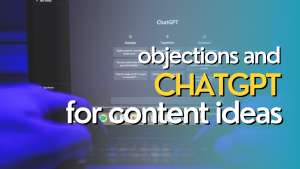These are 7 SEO tactics that many SEOs will cling to as best practices. I do not do any of them.
- I do not pay attention to follow / nofollow ratios
- I do not pay attention to anchor text ratios
- I do not use nofollow on internal links
- I do not look at DA / DR or any other domain level metrics when I am acquiring/purchasing links
- I do not only go after relevant, high authority links
- I do not intentionally build naked URL or generic text anchor links
- I do not worry about word counts
I do not pay attention to follow / nofollow ratios
I have never worried about this. I could not tell you what the follow / nofollow ratio is of any site I am working on.
One reason I never joined the bandwagon on this one was that it just simply was way too simplistic. Google has more PhD’s working for them than NASA, and the best they could come up with is some arbitrary percentage of links that should be nofollow? Really? That’s it?
If they did push forward with this silly idea, it would be way too easy to game and avoid any sort of filtering associated with it.
And speaking of ratios…
I do not pay attention to anchor text ratios
The reasoning is kind of similar to the above. All these brilliant people trying to fight spammy link practices and their bright idea is to look at anchor text ratios?
This was a myth that started within weeks after Penguin launched. If you were in the business back then, you may remember that things were a bit chaotic in the community. Many sites had gotten wiped out.
We are not talking about rankings dropping a little bit like you hear people talking about after the recent core update.
No. Sites went from ranking in the top 3 and dominating their niches to outside of the top 100. Many times outside the top 500.
Entire businesses were wiped out. Online empires crumbled. The dead rising from the grave. Human sacrifice! Dogs and cats living together! Mass hysteria!
People were desperate for answers and a solution, and in those first few weeks after Penguin hit, some group published an article that went viral suggesting it was anchor text ratios. People latched on to this idea, and the rest is history.
Also, if anchor text ratios were really that big of an issue it would be extremely easy and cheap to blast any competitor you wanted with a few hundred thousand links using a single anchor to sink their page.
I do not use nofollow on internal links
I’m kind of shocked that people still do this and recommend it. Just this very week I have seen it discussed in 3 different Facebook groups. I even saw someone suggesting using nofollow on links to their own social media accounts. Tagging your links as nofollow does not conserve link equity for your other links. There is no benefit to using it. That changed in 2009.
If you are unsure how nofollow works, you can find a note I shared about it last year.
I do not look at DA / DR or any other domain level metrics when I am acquiring/purchasing links
They do not have any real meaning to me. They can be highly inaccurate. They can be easily manipulated. Even if they were accurate, they tell you nothing about the page your link is on, which is what matters. The link profile of that page is what is important. Metrics like DA / DR are DOMAIN level metrics, not page level.
On the topic of acquiring links…
I do not only go after relevant, high authority links
Only is the key word here. The ideal link is both relevant and on a high authority page, but I will take a link that checks just one of those two boxes.
A link that is relevant is always going to be a good thing. I’ll happily take those and point them right at a relevant page I want to rank.
Links on high authority pages that are not necessarily relevant, I’ll take those too. These links I’ll either point at a link magnet I create or I will point them at a home page or category page. In these cases, I’m just looking to take the link equity from the link and then distribute it around my site where it is going to pass through relevant links.
I do not intentionally build naked URL or generic text anchor links
This ties in a bit with the whole anchor text ratio thing. I do not actively build links where I use a naked URL as the anchor or things like click here, learn more, etc. If they are good links, I don’t want to waste them with some generic anchor.
If you really think you need naked URL and generic anchor links, there are plenty of places like directories where you have no choice but to use something like that. You’ll also likely end up with a bunch from scraper sites whether you want them or not.
I do not worry about word counts
I don’t worry about word counts, but because of the nature of the writing business, I’m forced to pay attention to them a bit. Most writers and writing services charge by the word, so whether you want to or not, you have to give them a target word count for their work. What I do to combat this is give them a wide range. I won’t order a 1500 word article. I’ll give them a range of 1200 – 1800 words. If they come in at 950, but have covered the topic completely, I’m fine with that. Also if they write 2200 words, that is fine too.
Like a few of the other points on this list, the idea that how many words are on a page matters is just too simplistic to me. As complex as Google’s algorithms are, the idea that they are going to ding a page because it does not meet some arbitrary word count number just seems really silly.
It’s not how many words are on a page. It’s how you use those words that matters.



